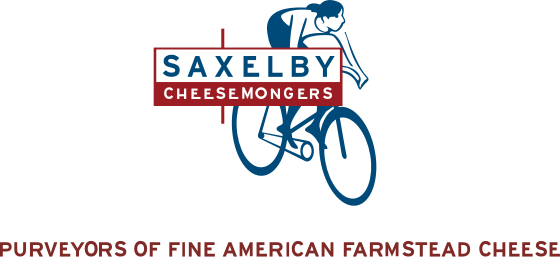
What is a bloomy rind cheese and makes it bloom? Welcome back to Ask a Cheesemonger, where Jill Tardiff, the manager and specialty foods and beverage buyer of our Chelsea Market shop, answers all your burning questions about cheese.
Hey Jill, could you tell us what a bloomy rind cheese means?
You can spot a bloomy rind cheese—also known as surface-ripened, mold-ripened, or soft-ripened cheeses—by their velvety white rinds, which, depending on the style, are comprised of yeast and/or mold.
Bloomy rind cheeses can be chalky or creamy—some even spoonable—and can exhibit mild and tangy or more assertive savory flavors, depending on the style. They can be as simple as Chabichou du Poitou and Crottin de Chavignol or something more elaborate like Brie de Meaux and Brie de Melun or Camembert. For instance Summer Snow, a light, buttery sheep's milk cheese from Woodcock Farm in Vermont, is made in that Camembert style. Sometimes you'll see a rind with a wrinkled brainy appearance, like St. Johnsville Junior from Cohran Farm 1790. These are known as geo rinds, which are made with a particular yeast: Geotrichum candidum.
How should I start tasting?
Brie and Camembert are what the general public thinks of as bloomy rind cheeses. Both are made with Penicillium camemberti, a fungus whose spores are mixed with the milk before molding. Our favorite recommendations in this group include Calkins Creamery's Noble Road and its smaller version, Noblette, the perfect size for baked Brie. We also recommend Moses Sleeper from the Cellars at Jasper Hill Farm, Mt. Alice from von Trapp Farmstead, and Nancy’s Camembert from Old Chatham Creamery.

Can I eat the rind?
We entreat our customers to do so. The rind augments the whole experience of the cheese.
Some lactic-style bloomy rind cheeses don't have much of a rind at all. If you're just starting to explore cheese rinds, you may like Afterglow and Lake Breeze, two goat cheeses from Blakesville Creamery.
While you're tasting the rind in a bloomy rind cheese, also pay attention to the creamline. This is a soft, sometimes gooey layer in between the rind and the interior paste. As the rind breaks down fats and proteins during aging, the creamline might evolve from a creamy band to a liquified layer, resulting in a delicious mess!
What ingredients do bloomy rind cheeses pair with?
This group is pretty congenial. Honey, most berries and stone fruit, jams, preserves, and nuts are all good options. Figs and walnuts especially.
For beverages, what's made within the region usually pairs well. It's a natural tendency of these regional foods to complement one another, and there's potential to create a "third taste" beyond the experience of a solitary cheese or wine. Look for dry sparkling cider or pinot noir made in the same state or region as your cheese.

Can you bake any bloomy rind cheese like Brie?
For the most part, though I'd suggest a firmer cheese with a thicker rind so it stands up better to heat. A lactic-style cheese will probably melt too quickly, and those are delicate enough to enjoy on their own.
How about your personal favorites?
I love Moses Sleeper. It's always mushroomy; you take it out of the wrapper and inhale and it's like you're deep in the woods. Noble Road's creaminess is just delightful.
This is true for all cheese, but especially bloomy rind ones: they're expressions of seasonality. The beautifully nuanced cheeses made by Laini Fondiller of Lazy Lady Farm are excellent examples of that. They're hand-ladled and aged in a natural cave dug into a hillside, on an off-grid farm powered by solar and wind. Right now on the cusp of spring we're enjoying a luxurious cow's milk cheese called O' My Heart. That cheese will go out of season this month, and soon we'll have Thin Red Line, a bright and zippy cheese ripened with ash that has a thin layer of smoked paprika in the middle.
Visit Jill at our Chelsea Market cheese shop, and dive into all our bloomy rind cheeses!

